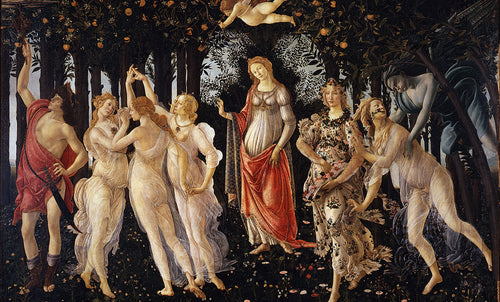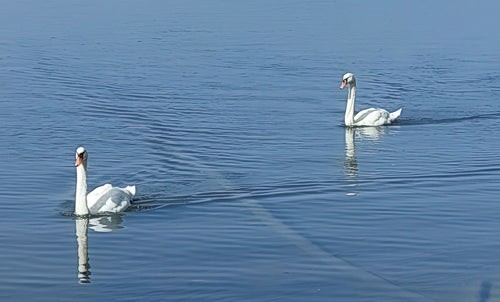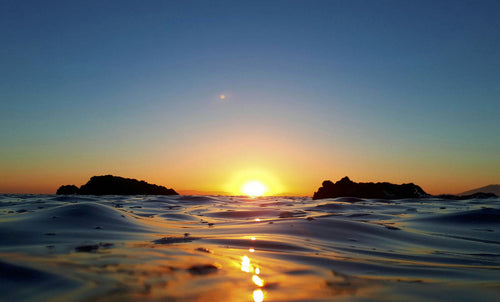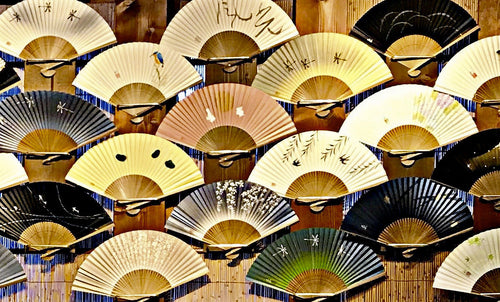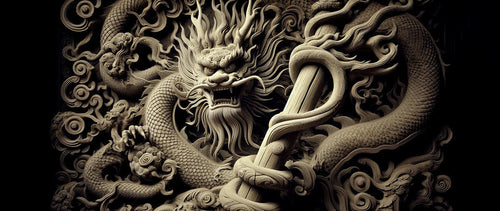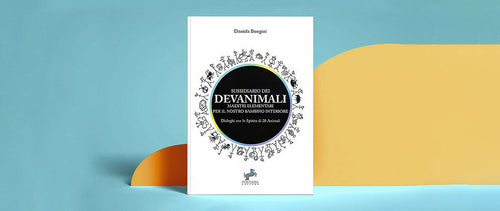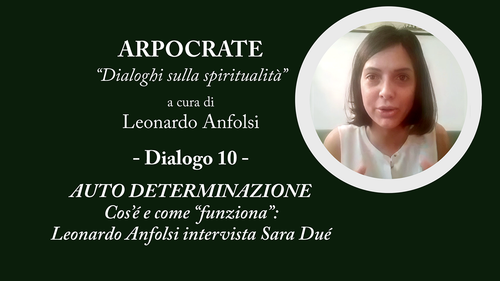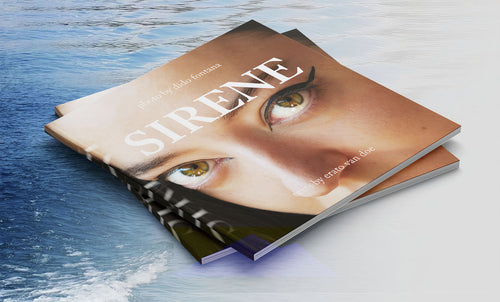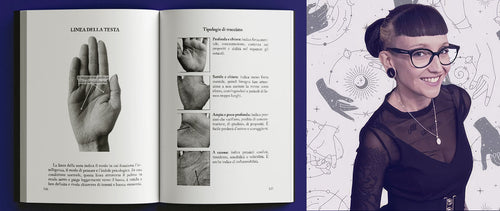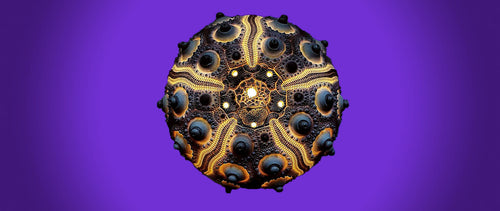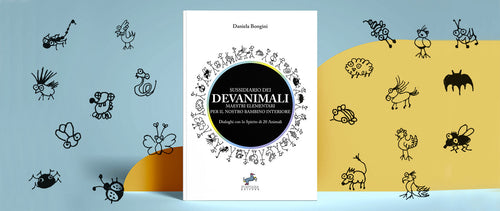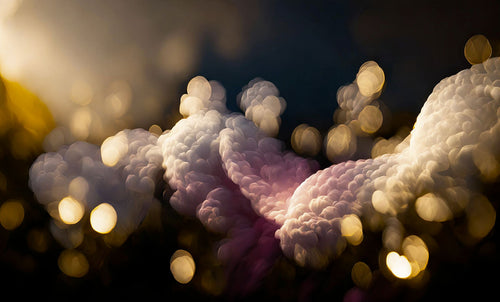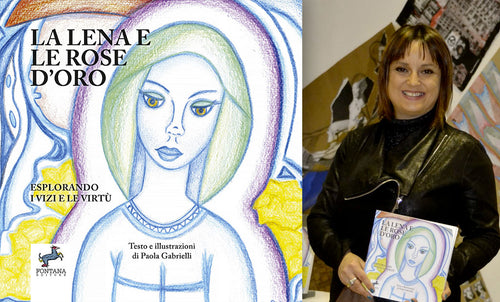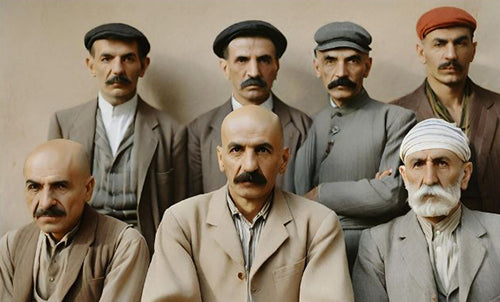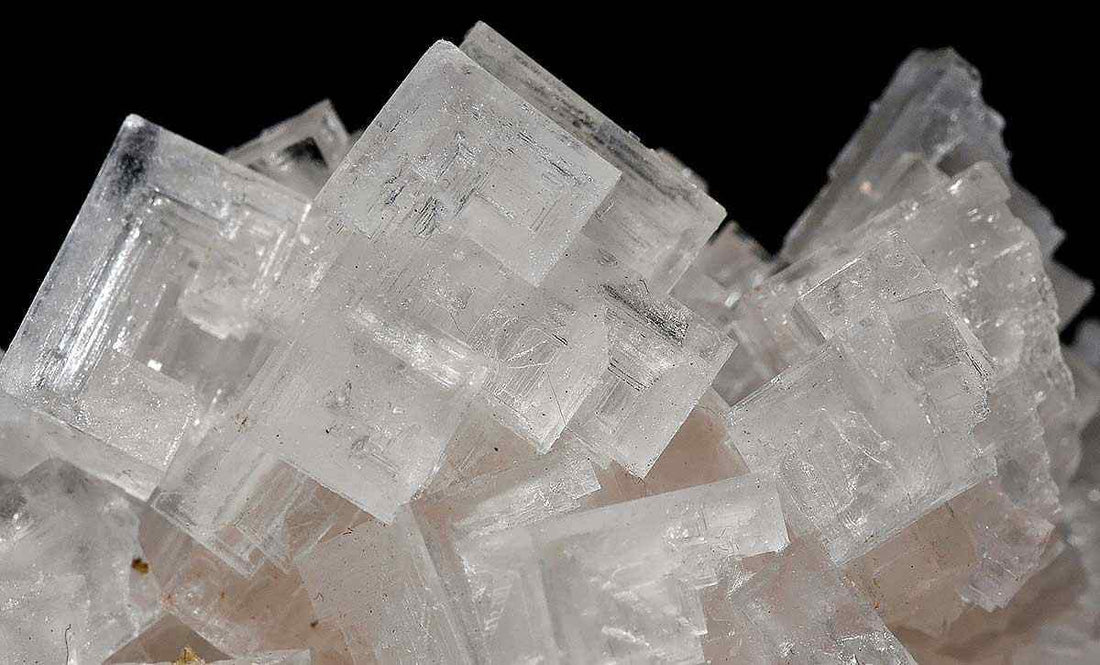
Alchemical Research Study: Ruling Planets and Salt of Sulfur Crystal Structures
James CollinsAccording to the Philosophers of Nature (PoN), the ruling planet of any given herb will determine how that plant’s Salt of Sulfur crystallizes. One could therefore determine the plant’s ruling planet by observing its crystal structure under the microscope. In this article, the crystal structures of seven herbs, each with a different ruling planet, were observed under a microscope. It was found that only two of the seven crystal structures observed agreed with this correspondence study.
Introduction
Jean Dubuis has stated that the crystal structure of the Salt of Sulfur of any given plant will correspond to its ruling planet. This present study will attempt to determine if this theory holds true.
There have been many instances when different sources (i.e. books, internet, etc.) have given different ruling planets for the same plant. In his article, “Planetary Attribution of Plants” Johann Hasler made an attempt to rectify this situation, and a new table of plants and their corresponding ruling planets was given. Many alchemists try to follow astrological timing in their work in order to strengthen and improve the quality of their end product, so following incorrect timing would almost definitely prove to be disadvantageous. Having a test to determine the ruling planet of any given herb or plant would virtually eliminate this problem. This present study gives some first steps in determining if this test would be feasible.
In this present study seven herbs were chosen, each ruled by a different ruling planet:
- Basil (Mars)
- Lemon Balm (Jupiter)
- Horsetail (Saturn)
- Celandine (Sun)
- Chickweed (Moon)
- Yarrow (Venus)
- Caraway Seeds (Mercury)
Eight ounces of each were obtained. These plants were chosen because both “Alchemist’s Handbook” by Frater Albertus and “Spagyrics by Manfred Junius (two very popular reference books on the alchemical art) agree that these are the ruling planets of the chosen herbs above.
In this series of experiments, the Salt of Sulfur of each herb will be obtained and crystallized, then their crystal structures will be analyzed under a digital microscope.
Review of the Crystal Structures
Crystals can take a number of different shapes depending on their chemical makeup and the way in which they grew. We can divide these shapes into seven categories by measuring their structure along their three axes.

Figure 1: All seven crystal structures.

The Cubic System
The cubic crystal is also known as the “isometric” crystal. It is characterized by its total symmetry: It has three crystallographic axes that are all perpendicular to each other and are equal in length. At each of the crystal’s four corners there is one lattice point. An example of a crystal that has the cubic system is fluorite or ordinary table salt.

The Hexagonal System
The hexagonal crystal has four crytallographic axes comprised of three equal horizontal axes (a, b, d) at 120°, and one vertical axis (c) that is perpendicular to the others. The c axis can be either shorter or longer than the horizontal axes. Beryl follows this crystal structure.

The Tetragonal System
A tetragonal crystal is a cubic crystal that has been stretched along its c axis to form a rectangular crystal with a square top. Wulfenite follows this crystal structure.

The Rhombohedral System
The rhombohedral crystal is also known as the trigonal crystal. It has a shape that is similar to the cubic crystal, but has been skewed, as if one had gripped opposing corners of the crystal and stretched it. It is still considered “prismatic” in that all six of its faces are parallel to each other, just like the cubic crystal, but it has an oblique shape. Tourmaline is an example of a crystal that follows this crystal structure.

The Orthorhombic System
The orthorhombic crystal has three perpendicular axes, all with different lengths. An example of a mineral that bears this structure is stibnite.

The Monoclinic System
The monoclinic crystal has three unequal axes. The a and c crystallographic axes are inclined toward each other an an oblique angle, while the b axis is perpendicular to the other two. Feldspar follows this crystal system.

The Triclinic System
The triclinic crystal has three unequal crystallographic axes, all of which intersect at an oblique angle. It has no discernible symmetry and no mirrored or prismatic planes. Rhodonite follows this crystal structure.
The Crystal System and Correspondences
In Mineral Lesson #13 of the Philosophers of Nature lessons, Jean Dubuis gives the following planetary correspondences for each of the crystal systems:
|
Planet |
Crystal System |
|
Saturn |
Cubic |
|
Jupiter |
Tetragonal |
|
Mars |
Orthorhombic |
|
Sun |
Monoclinic |
|
Venus |
Triclinic |
|
Mercury |
Rhombohedral (aka Trigonal) |
|
Moon |
Hexagonal |
Table 1: The planetary correspondences for the crystal systems.
Since we now have the corresponding planets, we can lay these crystal structures in their proper position on the Kabbalistic Tree of Life as follows:

Procedure
Normally, we obtain the Salt of Sulfur by drying, calcining and leaching the “soup” or “thick tea” left over from the steam distillation of the herb which provided the essential oil (or alchemical “Sulfur”). Here, since we will not be needing or using the essential oil, I will merely boiled the herbs (separately, of course) with distilled water until I could no longer obtain any more “tea.” This tea was boiled down, dried, calcined to a gray-white, then leached to obtain the Salt of Sulfur. The solid herb which was left over from the extraction was be dried and then calcined and leached to obtain the Salt of Salt for comparison. The Salt of Sulfur was dissolved in distilled water and then left in a lab incubator at 40°C until the water evapourated to the point of saturation (which was observable by salt crystals forming on the surface of the solution). This saturated solution was then poured into an 8 dram bottle witha piece of natural twine in it, which acted as a substrate for the salt crystals to form on. The bottle with the solution and twine was left in the incubator until roughly half the solution had evapourated and crystals were observed adhering to the twine. The twine was then removed and left on a petri dish to dry in the incubator. All crystals were then analyzed by sight under the microscope.
In this experiment I avoided the use of a Soxhlet extrator. This was merely out of personal preference because I find that this type of extractor has the habit of clogging very easily, and I did not want to deal with the hassle of unclogging it all the time. The procedure above was deemed both adequate and equivalent.
Astrological timing was not followed in the above experiment. In other words, I did not start the extractions or any other operation at the hour of the ruling planet. I felt that to do so would have greatly extended the amount of time, as my own life situation (i.e. my job) did not allow me to always follow these timings. For those who are curious, I suggest conducting this same experiment while at the same time following astrological timing to see if there is a qualitative difference.

A seahorse/phoenix[1]
Results
The amounts of Salt obtained from the above procedure are listed in the table below. As can be seen, the amounts of Salt of Salt are very miniscule, and as a result there wasn’t enough to grow crystals with.
|
Salt of Salt |
Salt of Sulfur |
|
|
Basil |
0.3g |
10.1g |
|
Lemon Balm |
1g |
11.4g |
|
Horsetail |
0.1g |
7g |
|
Celandine |
0.4g |
7.2 |
|
Chickweed |
1.3g |
10.9g |
|
Yarrow |
0.1g |
7.5g |
|
Caraway |
0.1g |
3.9g |

Basil
According to the literature, the Salt of Sulfur of Basil should follow the orthorhombic system (similar to that of stibnite), but what it actually seems to follow (as seen in the above pictures) is the cubic system. This indicates one of two things: 1) that the salt-crystal correspondence theory does not hold up, or 2) that Basil is in fact ruled by Saturn rather than Mars.

Lemon Balm
According to the literature, the crystal structure of the Salt of Sulfur of Lemon Balm should be tetragonal, but in the above pictures that is obviously not the case. The crystals seen in the pictures above seem to follow more the orthohombic or even triclinic formations. Again, as in the case of Basil, either the theory does not hold up, or Lemon Balm is actually ruled by Mars (or perhaps Venus).

Horsetail
According to the literature, Horsetail, being ruled by Saturn, should have a cubic formation within its Salt of Sulfur. Again, that is not the case. The crystal formations that the Salt of Sulfur of horsetail seem to take is of a triclinic system. This would indicate also that either the theory does not hold up, or that horsetail is ruled by Venus rather than Saturn.

Celandine
Traditionally, celandine is ruled by the Sun, which correlates to a monoclinic crystal structure. This is confirmed in the above pictures.

Chickweed
Chickweed, being ruled by the Moon, should have a hexagonal crystal structure; this is confirmed in the above pictures.

Yarrow
Yarrow, being ruled by Venus, should have a triclinic crystal structure for its Salt of Sulfur. However, in the above pictures it can be seen that it actually follows a tetragonal crystal structure, which, according to the theory, would indicate that it is rather ruled by Jupiter.

Caraway
Caraway, being ruled by Mercury, should have a rhombohedral (or trigonal) crystal structure within its Salt of Sulfur. However, as can be seen in the above photos, this is not the case - rather, they follow a hexagonal crystal structure, much more like that of quartz crystals. If the theory we are testing were true, this would indicate that caraway is actually ruled by the Moon.
Discussion

In a 1992 seminar with Jean Dubuis, it was stressed that an elementary knowledge of crystal structures is necessary if one wants to progress in the alchemical work. Salt in particular exhibits all seven of the basic crystal structures, as indicated above. According to Kabbalistic and alchemical tradition, these seven basic crystal structures correspond to various levels on the Tree of Life, which in turn resonates with the inner level of the Operator or alchemical practitioner. Using these different crystal structures while working with not only the Salt of Salt but more importantly with the Salt of Sulfur opens up a large field for experimentation both on an inner and outer level. Work of this sort is not limited to the plant realm, either; one can also practice this work with Salt in the mineral realm. Jean Dubuis even mentions that “if you change [antimony’s] crystalline network... the Red Stone is possible.”
By using these correspondences, Jean Dubuis stated that you can determine the ruling planet of any given plant by crystallizing its Salt of Sulfur and analyzing its structure under a microscope. However, when this theory was tested following the above procedures, only two of the seven crystal structure corresponded with what tradition would have them. Thus far, this attribution of crystal structures and planetary rulership does not seem to hold up.
I am not willing to completely disregard this system altogether, however. Several variables have not been explored:
- Astrological timing was not followed in the course of this experiment. If this is going to be explored, a system will need to be established to determine whether the crystal structure is a result of the astrological timing or the plant itself (ie. does all Salt of Sulfur form a monoclinic crystal structure when following Solar hours, or only when an herb ruled by the Sun is used?).
- Does making an extraction using ethanol instead of water make a difference in the resulting crystal structures?
- Because there was not enough Salt of Salt obtained from the herbs used, I did not explore the crystal structres that would have been obtained here. A possible future experiment might be to take the same herbs used above and just calcine and leach them, then see what crystal structure this takes. Granted this would be a mixture of both Salt of Salt and Salt of Sulfur, but this would nevertheless be an interesting course of experimentation.
From this experiment we have a few possible conclusions:
- The Salt of Sulfur - planetary correspondence system does not hold up. However, the reasoning behind this system, as explained by Jean Dubuis and Robert Bartlett[2], still seem sound. I would argue that the system still needs a little bit of tweaking in order to hold up to scrutiny - perhaps a new system based on this “older” model;
- The traditional ruling planets of the herbs above are wrong and need to be revised. I do not think this is a likely possibility, however, as the traditional ruling planets of these herbs have long been established.
There is some variance to the ruling planets of various herbs when comparing different source texts, such as Culpepper’s Herbal, Jean Dubuis, Frater Albertus, and Manfred Junius. This has led some to adopt a dual-rulership for some herbs in order to account for the discrepancies. It would be very useful to have a test by which one can determine objectively and with certitude what planet rules any given herb. With the research presented in this article I hope to start developing such a test. Further research will be conducted at the Toronto Hermetic Society.
[1] A seahorse/phoenix as a symbol of living crystalization: Ignis inside Aqua that gives structure to element Terra. The town of Venice is still builded on huge oak trunks that centuries had crystalized and made strong as concreet. Bassorilievo on a palazzo nearby the Gualdi’s house. Venice, Italy.
[2] See Robert Bartlett’s “Real Alchemy”.






